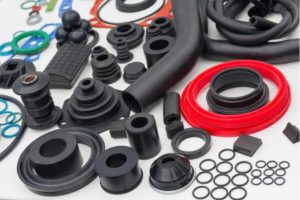Elastomers are a type of polymer material that are known for their ability to stretch and return to their original shape. This property, known as elasticity, makes elastomers useful in a wide range of applications, from automotive parts to medical devices. There are several different types of elastomers available, each with its own unique properties and characteristics. In this blog post, we will explore the various types of elastomers and their common applications.
Natural Rubber
Natural rubber is derived from the sap of the rubber tree, which is native to South America. It was first discovered by the ancient Mayans, who used it to make balls for a ceremonial ballgame. Natural rubber is an excellent elastomer, with a high degree of elasticity and excellent tensile strength. One of the main advantages of natural rubber is its resistance to heat. It can maintain its elasticity and strength at high temperatures, making it ideal for use in applications such as automotive tires and gaskets. Natural rubber is also resistant to abrasion and chemicals, making it useful in a variety of industrial applications. However, it does have some drawbacks. Natural rubber is not as resistant to UV light and ozone as other elastomers, and it can deteriorate over time if exposed to these elements.

Synthetic Rubbers
Synthetic rubbers are man-made elastomers that are designed to mimic the properties of natural rubber. There are several different types of synthetic rubbers, each with its own unique characteristics and applications. One type of synthetic rubber is Styrene-Butadiene Rubber (SBR), which is made from a copolymer of styrene and butadiene. SBR has properties similar to natural rubber, but it is more resistant to abrasion and tearing. It is commonly used in applications such as tires, conveyor belts, and shoe soles. Another type of synthetic rubber is Butyl Rubber (IIR), which is made from isobutylene and isoprene. Butyl rubber has excellent airtightness and chemical resistance, making it useful in applications such as inner tubes and sealants. Other common types of synthetic rubbers include Nitrile Rubber (NBR), which has excellent oil and solvent resistance, and Fluoroelastomer (FKM), which has superior heat and chemical resistance.
Thermoplastic Elastomers
Thermoplastic elastomers (TPEs) are a type of polymer material that can be repeatedly softened by heating and hardened by cooling. This allows them to be molded and reshaped, making them useful in applications where flexibility and versatility are important. TPEs are available in a wide range of hardness levels, from very soft and flexible to hard and rigid. They can be blended with other polymers to create materials with specific properties and characteristics. One of the main advantages of TPEs is their ability to be recycled. Unlike traditional elastomers, TPEs can be melted down and remolded, making them an environmentally-friendly choice. They are also easy to process and can be injection molded, extruded, or thermoformed. TPEs are commonly used in applications such as automotive parts, toys, and medical devices.
Silicone Elastomers
Silicone elastomers are a type of polymer material made from silicon, oxygen, carbon, and hydrogen. They are known for their excellent heat resistance and durability, as well as their low toxicity and biocompatibility



